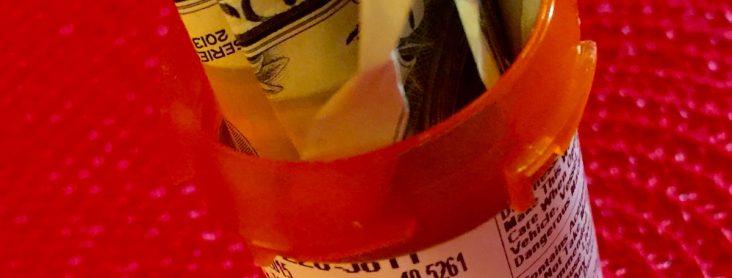Gov. Hutchinson: Insurance rate requests show state is a leader in health care reform
by July 26, 2017 3:32 pm 916 views

Relatively low health insurance rate increase requests for Arkansas’ individual marketplace indicate the state is a leader in health care reform, according to Gov. Asa Hutchinson.
The Arkansas Insurance Department and Gov. Hutchinson’s office reported Wednesday (July 26) that plan year 2018 health insurance rate increase requests “are among the lowest in the United States,” and credited that fact on the Arkansas Works program.
Arkansas Works uses federal Medicaid dollars under the Affordable Care Act to purchase private health insurance for individuals with incomes up to 138% of the federal poverty level. It was created in 2013 after the U.S. Supreme Court ruled states had the option of expanding their Medicaid populations. Arkansas received a waiver from the Obama administration allowing it to purchase insurance through the private markets.
Work requirement changes and a change in the qualifying poverty level are estimated to reduce the enrollment by 60,000. Supporters of the changes pointed to the reduction of up to $93 million a year from the state’s budget. As of March 3, 310,893 individuals were covered, with enrollee numbers dropping to 264,076 as of July 15.
Following are the initial rate requests for individual on-marketplace qualified health plans for plan year 2018.
• Ambetter
9.9% average increase requested
93,171 insured
• QCA Health Plan
22.05% average increase requested
21,274 insured
• QualChoice Life & Health
21.94% average increase requested
20,101 insured
• USAble (Arkansas Blue Cross Blue Shield – individual)
7.8% average increase requested
202,005 insured
“This round of initial requests places Arkansas among the lowest in the country as many states are seeing companies ask for increases between 50% to 80%,” Arkansas Insurance Commissioner Allen Kerr said in a statement. “While these requests remain subject to actuarial analysis and examination, they show that insurers are better serving Arkansas policyholders thanks to a deeper understanding of the state’s health insurance market.”
Gov. Hutchinson said the state’s unique approach to health care and changes by insurance companies to improve care management resulted in a “stable individual marketplace” and “significantly lower” rates than most states. Without mentioning the Trump Administration or Congress, the governor also suggested Arkansas’ approach could be a national model.
“In the midst of the confusion and heated rhetoric about the future of health care insurance in our country, Arkansas has led the way in health care reform, and the result is that requested increases are much less than we are seeing nationally. We have maintained multiple choices for the consumer that are more balanced and competitive, but we have to continue to slow down the rising health care costs. This news shows progress,” the governor said in a statement.
The proposed rate changes among the four providers covers just under 340,000, or a little more than 10% of the state’s 2.988 million residents. Those not covered in the individual marketplace are covered by an employer, a federal program, or do not have insurance.
Companies offering individual and small group health insurance plans must receive rate approval from the Arkansas Insurance Department. The department uses an analysis by a member of the American Academy of Actuaries to review the rates. The department has until Aug. 16 to rule on individual rate plan changes for 2018. The open enrollment period for 2018 begins Nov, 1, 2017 and ends Dec. 15, 2017.
Arkansas Blue Cross Blue Shield (BCBS), the largest by coverage of the carriers in the individual market, said a higher loss ratio in 2016 resulted in rate increases for 2017 and 2018. Premiums written by BCBS in 2016 totaled $613.4 million, with $702.8 million in claims paid. The projection by BCBS for 2018 is $1.089 billion in premiums and $912.8 million in claims paid.
“In general, the factors that drove the proposed 7.81% rate change has been in large part the utilization and cost trend of this block of business which was determined to be 8.64% of allowed claims overall annually,” the company noted in its filing with the Arkansas Insurance Department. “Also, the actual experience for 2016 came in higher than what was expected. We had projected a loss ratio for 2016 of 83.34%, whereas actual experience resulted in a loss ratio of 96.51%. This worse-than-expected experience lead to higher projected claims for 2017 and 2018.”
The proposed 2018 rate changes for BCBS range between a 1.8% reduction and a 27.3% increase.
Link here for more information on 2018 rate proposals.
